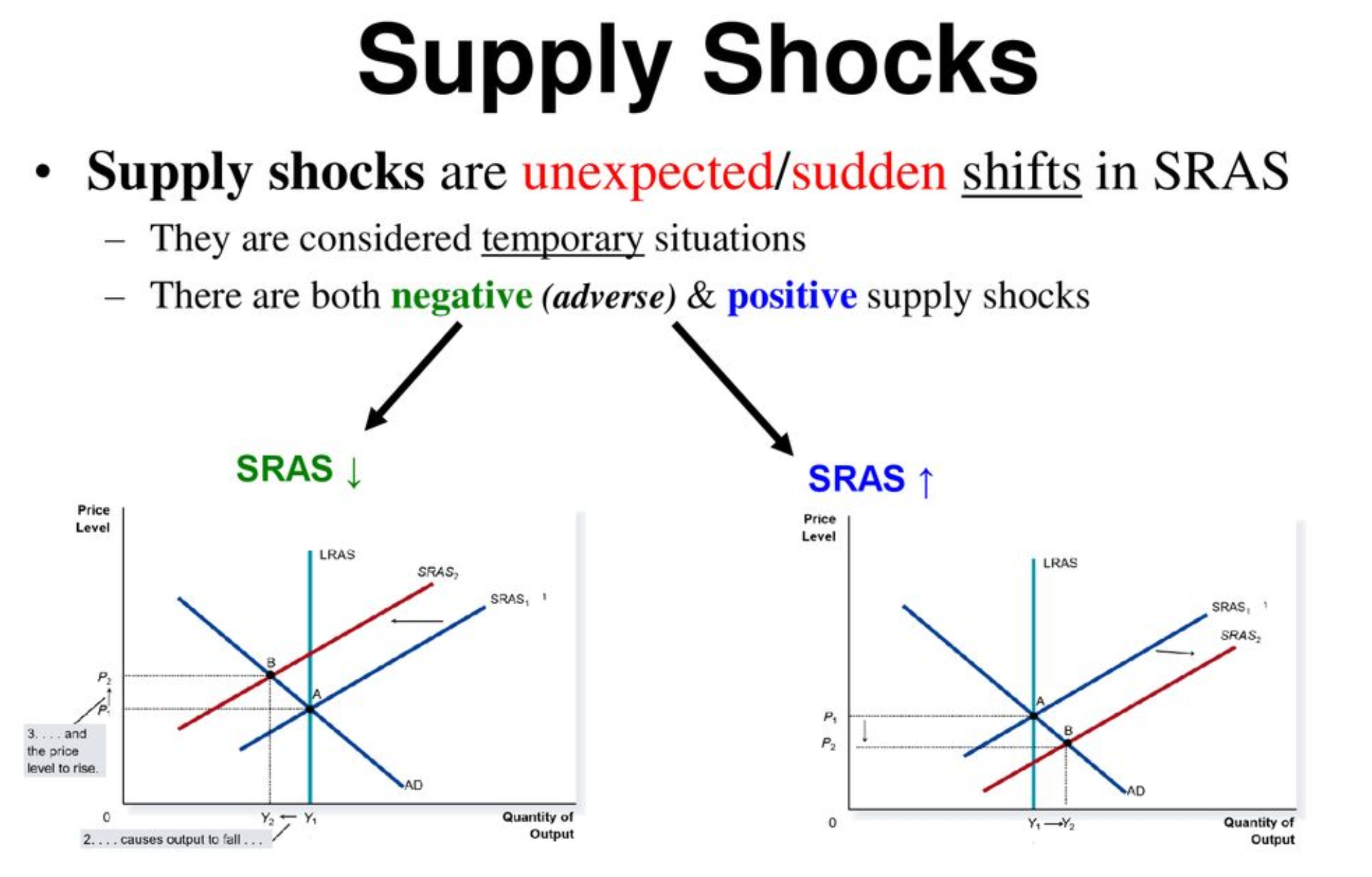Supply Shock
A supply shock occurs when there is a sudden and unexpected change in the supply of goods or services that significantly affects the market equilibrium price. It can result from various factors, including natural disasters, political events, and technological advancements.
Types of Supply Shocks
Supply shocks can be of two types: positive supply shocks and negative supply shocks.
- Positive supply shocks occur when the supply of a particular commodity or service increases suddenly. Such events are usually due to technological advancements or a sudden increase in production. For instance, the discovery of shale oil in the United States has resulted in a significant increase in oil supply, leading to lower oil prices.
- Negative supply shocks, on the other hand, occur when the supply of a commodity or service suddenly decreases. Such events can result from natural disasters, wars, or other geopolitical events. For example, the 2011 Fukushima nuclear disaster in Japan caused a sudden decrease in the supply of energy and resulted in higher energy prices worldwide.
Causes of Supply Shocks
There are several causes of Supply Shocks such as :
- Natural Disasters: Natural disasters like earthquakes, floods, hurricanes, and droughts can cause significant supply shocks. These events can disrupt the production and transportation of goods and services, leading to a sudden change in prices. For example, the 2011 Thai floods caused a shortage of hard disk drives, leading to a price increase for these products.
- Geopolitical Events: Wars, political instability, and other geopolitical events can cause significant supply shocks. These events can disrupt the production and distribution of goods and services, leading to changes in prices. For example, the 1973 oil embargo by the Organization of Arab Petroleum Exporting Countries (OAPEC) led to a sudden decrease in oil supply, resulting in a significant increase in oil prices.
- Technological Advancements: Technological advancements can cause both positive and negative supply shocks. Advancements in technology can increase the production of goods and services, leading to a positive supply shock. For instance, the advent of 3D printing has made it possible to produce goods more efficiently and at lower costs. This has resulted in a positive supply shock for some products. However, technological advancements can also lead to negative supply shocks, as they can make some goods obsolete. For example, the rise of electric vehicles could lead to a negative supply shock for the oil industry.
Impacts of Supply Shocks
Supply shocks can have significant impacts on the economy, including changes in inflation, output, and employment.
- Inflation: When the supply of goods and services decreases due to a negative supply shock, the prices of those goods and services increase. This can result in inflation, as consumers and businesses are forced to pay higher prices for the same goods and services.
- Output: Supply shocks can also affect the output of the economy. When the supply of goods and services decreases, businesses may not be able to produce as much as they used to, resulting in a decrease in output.
- Employment: Supply shocks can also affect employment. When the supply of goods and services decreases, businesses may need to lay off workers due to decreased demand. Conversely, when the supply of goods and services increases, businesses may need to hire more workers to meet the increased demand.
Thus, supply shocks can have significant impacts on the economy, including changes in prices, output, and employment. They can result from various factors, including natural disasters, geopolitical events, and technological advancements.


